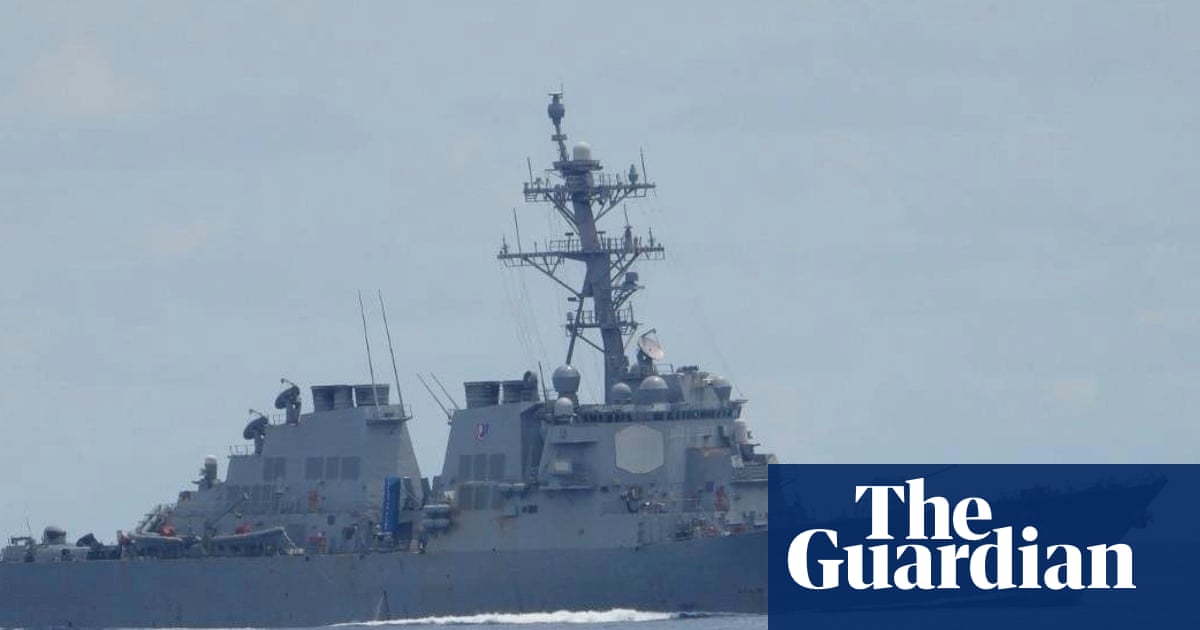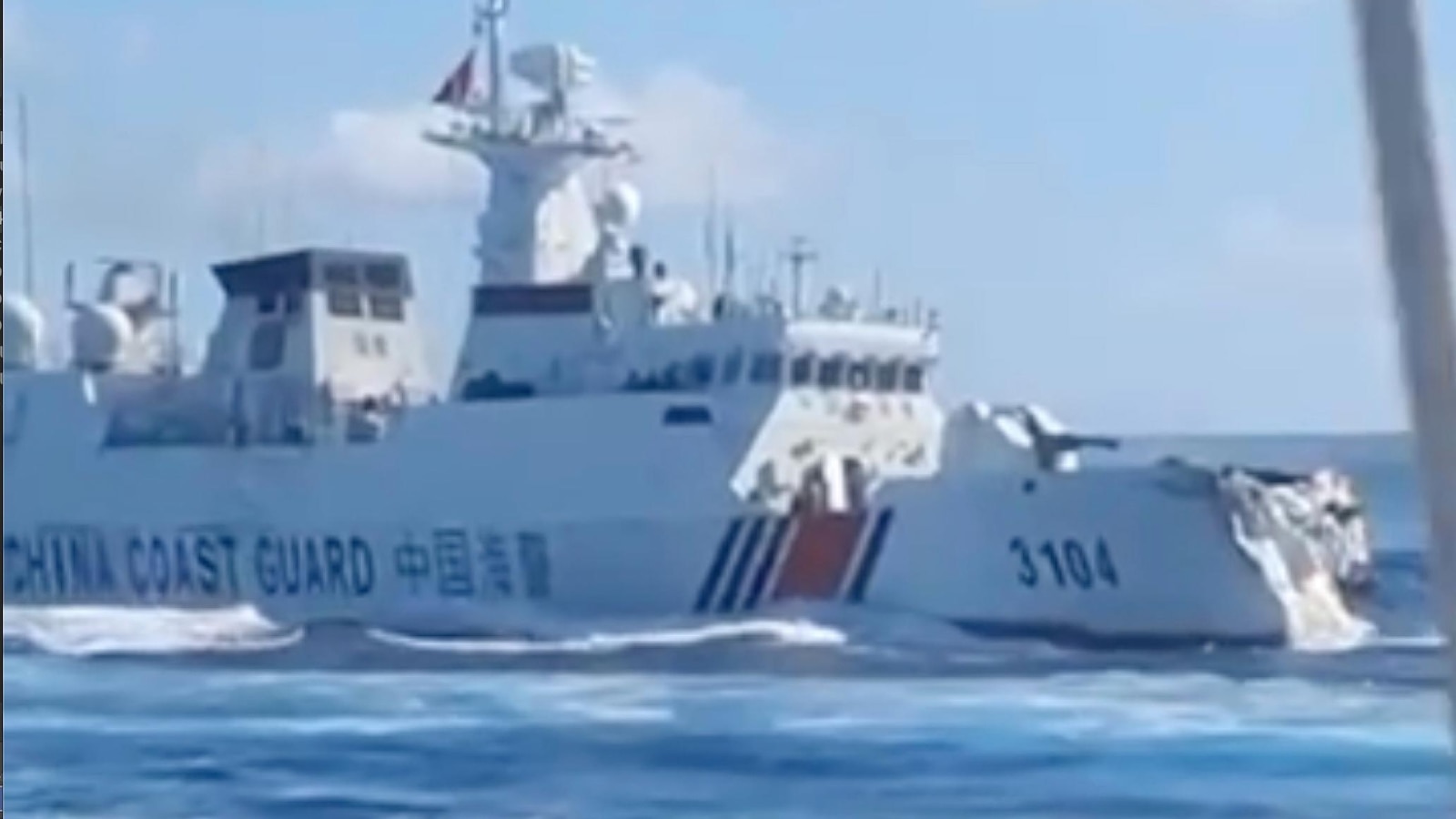Chinese and Philippine Ships Collide in Disputed South China Sea
A collision occurred between Chinese navy and coast guard vessels and a Philippine patrol ship near Scarborough Shoal in the disputed South China Sea, escalating territorial tensions, with both nations blaming each other.
Subscribe to unlock this story
We really don't like cutting you off, but you've reached your monthly limit. At just $5/month, subscriptions are how we keep this project going. Start your free 7-day trial today!
Get StartedHave an account? Sign in
Overview
- Chinese navy and coast guard ships collided with a Philippine patrol ship near the Scarborough Shoal in the disputed South China Sea, marking a significant escalation in the ongoing territorial standoff.
- The incident involved Chinese vessels reportedly chasing the Philippine patrol ship, leading to the collision as part of the persistent territorial dispute in the contested waters.
- Following the maritime incident, both the Philippines and China immediately issued statements, each blaming the other for initiating the dangerous encounter in the sensitive region.
- Philippine vessels in the vicinity faced obstruction from other ships during the incident, further complicating the situation and highlighting the tense operational environment in the area.
- Despite the mutual accusations, the Philippine coast guard provided immediate support and medical aid to the Chinese coast guard crew after their ships collided, demonstrating humanitarian assistance.
Report issue

Read both sides in 5 minutes each day
Analysis
Center-leaning sources frame this story by emphasizing Chinese aggression and the Philippines' role as a responsible party. They consistently highlight the Chinese vessels' "risky maneuver" while chasing a Philippine boat, and provide historical context of China's past aggressive actions in the South China Sea. China's counter-narrative is included but often subtly undermined.
Articles (7)
Center (3)
FAQ
Both China and the Philippines claim Scarborough Shoal based on historical and legal grounds. China cites historical usage since 1279 during the Yuan dynasty and administrative claims since the 1930s, while the Philippines bases its claim on treaties from 1900 and 1898 and continuous sovereignty assertions. The dispute has been complicated by overlapping interpretations and claims.
The 2012 standoff started when the Philippine Navy attempted to apprehend eight Chinese fishing vessels anchored near Scarborough Shoal. Chinese maritime surveillance ships blocked the Philippine vessel, and tensions escalated, resulting in China effectively taking control of the atoll by blocking Philippine vessels from entering the lagoon.
In 2013, the Philippines filed an arbitration case under the United Nations Convention on the Law of the Sea (UNCLOS) against China, challenging the legality of China's maritime claims, including those over Scarborough Shoal. In 2016, the tribunal ruled largely in favor of the Philippines; however, China rejected the tribunal's jurisdiction and ruling.
A collision occurred between Chinese navy and coast guard ships and a Philippine patrol ship near Scarborough Shoal. Chinese vessels reportedly chased the Philippine ship, leading to the crash. Both countries blamed each other for initiating the incident. Despite the conflict, the Philippine coast guard provided medical aid to the Chinese crew after the collision.
The dispute has caused maritime standoffs and diplomatic tensions, with China enforcing patrols that restrict Philippine access to Scarborough Shoal. Economic impacts have included trade losses and heightened military alertness by both nations, complicating regional security dynamics.
History
- 3M

 3 articles
3 articles







